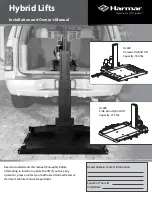
8
3.0 Basic TIG Welding Techniques
3.1 GTAW (TIG) Welding
The Gas Tungsten Arc Welding – commonly
referred to as Tungsten Inert Gas (TIG) –
process uses the heat generated by an electric
arc struck between a non-consumable tungsten
electrode and the workpiece to fuse metal in
the joint area and produce a molten weld pool.
The arc area is shrouded in an inert or reducing
gas shield to protect the weld pool and the
non-consumable electrode.
The process may be operated autogenously
(without filler), or filler may be added by feeding
a consumable wire or rod into the established
weld pool.
• The addition of filler is optional
• Only inert or reducing gases can be used as
the shielding gas
• TIG welding is a high quality, versatile and
commonly-used process
• TIG is suitable for welding ferrous and non-
ferrous materials
• The TIG process can be run on DC-, DC+,
or AC
The TIG process is capable of producing very
high quality welds in a wide range of materials
and in thicknesses up to about 8 or 10 mm.
It is particularly suited to welding of sheet
material and for putting in the root run of pipe
butt welds.
The process tends to be very clean, producing
little particulate fume, although it is capable of
generating ozone in appreciable amounts and is
not regarded as a high-productivity process.
Operation
Direct or alternating current power sources
with constant current output characteristics
are normally employed to supply the welding
current. For DC operation, the tungsten may
be connected to either output terminal, but is
most often connected to the negative pole.
The output characteristics of the power source
can have an effect on the quality of the welds
produced. Shielding gas is directed into the arc
area by the welding torch, and a gas lens within
the torch distributes the shielding gas evenly
over the weld area. In the torch, the welding
current is transferred to the tungsten electrode
from the copper conductor. The arc is then
initiated by one of several methods between
the tungsten and the workpiece.
Operating Modes
The TIG process may be operated in one of the
following modes:
• Direct Current Electrode Negative (DCEN)
• Direct Current Electrode Positive (DCEP)
• Alternating Current (AC)
The mode used is largely dependent on the
parent material being welded.


































